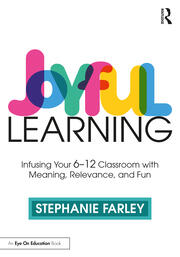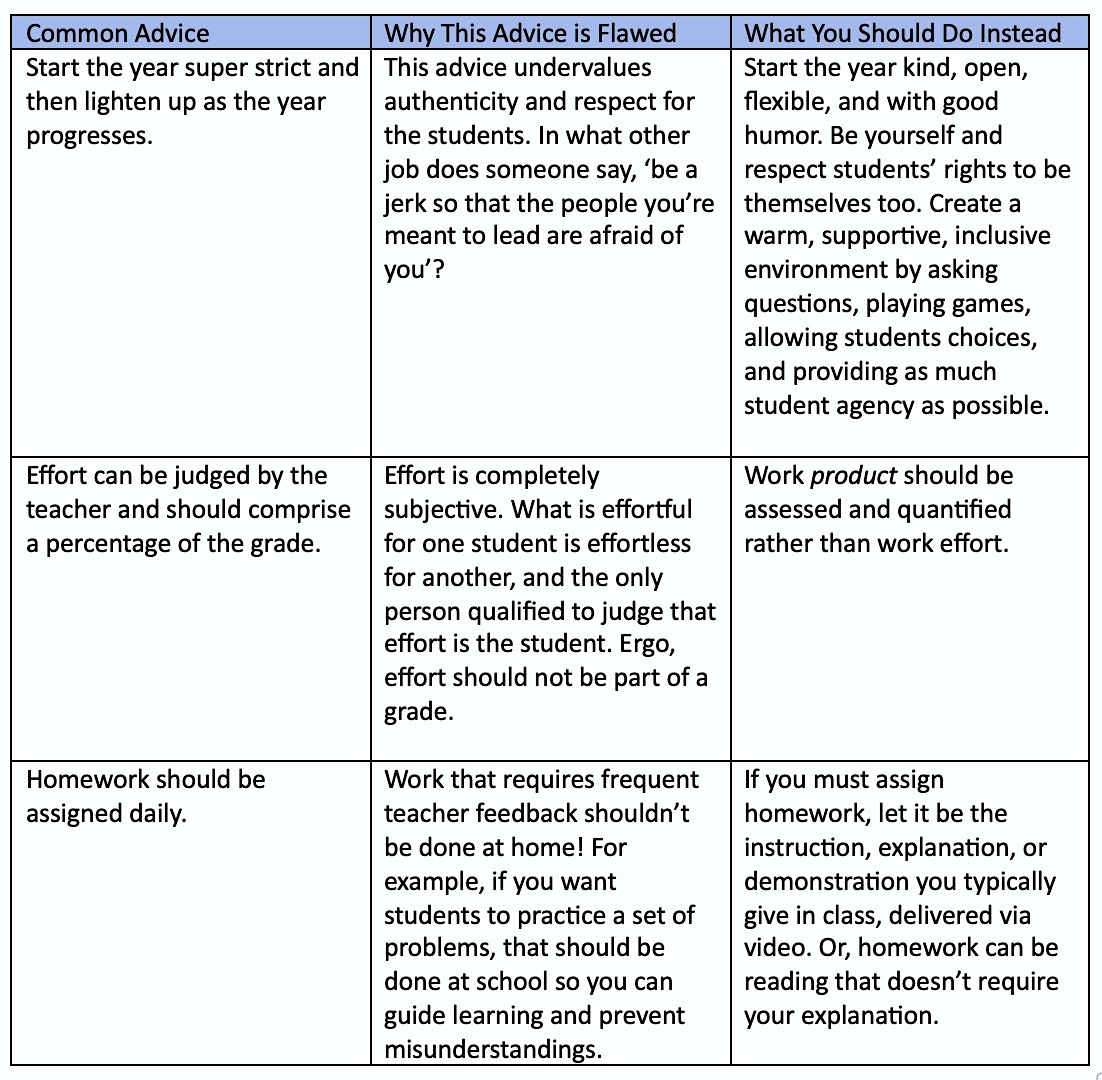Infuse Your Classroom with Meaning and Fun
Joyful Learning: Tools to Infuse Your 6-12 Classroom with Meaning, Relevance, and Fun
By Stephanie Farley
(Routledge/Eye On Education, 2023 – Learn more)
Reviewed by Cathy Gassenheimer

Happily, I know from my own work that a lot of teachers are embracing “meaning, relevance and fun” even though they may not call it that.
What is joyful learning? It involves structuring your classroom so that students thrive and succeed. They feel safe and clearly know and understand what is expected of them. The goal is for students to learn more by not playing “the game of school” or trying to guess what the teacher expects of them to get a good grade.

Learning By Doing…and Reading and Reflecting
Farley, a former teacher and independent school administrator, is now a writer and consultant who works with schools to infuse the type of joyful learning described in these pages.
In an early chapter she notes that as a student she loved school and loved the idea of teaching. After graduating from college with an English degree and no education credits, she got a job at an independent school where teaching credentials were optional. She was unaware of most education theories and methodologies, so she began her career emulating many of the things she remembered her own teachers doing – not always to good effect.
Fortunately for her students, Farley did a deep dive into education practice, reading works by John Dewey, Tom Guskey, Ken O’Connor, and many others. Through her independent study, she became convinced that student-centered teaching was critical and involved focusing on students first. She’s dedicated her career in education to pursuing that over-arching belief.
To Farley, joyful student-driven learning incorporates the following:
• Meaning: Why should I learn this?
• Autonomy: In what ways can students have some level of choice/control over their learning?
• Connection: How does this relate to the real world?
• Mastery: How will I know that I learned it?
• Positive Emotions: How can teachers incorporate humor, enthusiasm, curiosity, gratitude, and optimism into learning? (p. 6)
A Quick Read, Full of Resources
Even with the “Checklists and Extras,” this book is only 83 pages. It is a quick read that is packed full of ideas and resources.
Seven chapters comprise the book, all beginning with the word “joyful:”
- Joyful Approach
- Joyful Relationships
- Joyful Curriculum
- Joyful Assessment
- Joyful Grading
- Joyful Assignments
- Joyful Direction
Each chapter ends with a short summary and a list of works cited. Examples abound. As I read the book, I thought of other related works: Donalyn Miller’s The Book Whisperer, Ron Berger and Libby Woodfin’s Leaders of Their Own Learning, and all of Tom Guskey’s work. All of these authors stress the importance of student-centered teaching where students learn by doing and where the goal is mastery, not simply making good grades.
Making Connections
Farley stresses the importance of building rapport and strong relationships with students. Chapter two, Joyful Relationships, provides step-by-step ways to strengthen teacher-student and student-to-student connections. A key to relationship building is being clear about what is expected of students along with providing support to help students achieve.
Essential Questions and Backward Planning
In her self-study Farley discovered Wiggins & McTighe’s Understanding by Design, which helped her use essential questions, backwards planning, and the effective use of learning targets. As Stephen Covey reminds us, beginning with the end in mind can help both the teacher and student focus on the main thing: learning the concept or idea at hand. Backwards planning can also help the teacher integrate choice, appropriate challenge, and play, making the learning more joyful!
Assessment for Learning, Not Just Grading
Farley’s explanation of assessment is clear and concise, and found me nodding and annotating. She defines assessment as “methods or tools used to identify and measure student progress toward a learning goal” (p. 32). Farley stresses the regular use of formative assessment and feedback before giving a summative assessment or grade. And she allows students to resubmit work for a new grade to help them move closer to mastery. She notes:
“All teachers should figure out how to work revision into summative as well as formative assessments. This is best practice. I think of it like this: if my goal is to help students progress in their skills and develop resilience as they problem-solve, then the way to do that is through providing endless opportunities to learn from mistakes without those mistakes having a negative impact on grades” (p. 47)
I remember my first “real job” (after scooping ice cream at Baskin Robbins) was working for a Congressman in Washington. When I made a mistake – and I made several during my first months there – I wasn’t given an “F” and told to move on. Instead, I was expected to correct that mistake and continue to learn how things worked there. The real world doesn’t operate on grades. It operates on making things right and learning from our missteps!
Making It Happen
Throughout the book Farley provides examples of how to create a joyful classroom. Her chapter on Joyful Assignments is full of fun and innovative teaching ideas – ranging from building an understanding of the word “perseverance” by setting up an obstacle course – to learning to hone in on details by having students take a photo of something that captured their attention and then identify the specifics.
In addition to its many ideas and examples, the book contains sample rubrics, learning targets, and opportunities to provide student choice. It also contains what Farley calls “What’s Wrong About…” A couple of her “What’s Wrong” concepts are listed below (pp. 67-69).
A Good Summer Read
When you take that beach trip or perhaps a trip to a nearby lake, you might bring a copy of Joyful Learning with you. It will both restore you and provide some new ideas that you can use when you begin again in the fall!
Find more of Stephanie Farley’s ideas in these MiddleWeb articles.
Cathy Gassenheimer is a professional learning consultant specializing in collaborative adult learning and collective efficacy. For 22 years she was Executive Vice President of the Alabama Best Practices Center, a program of Alabama’s statewide nonprofit A+ Education Partnership, and led the work of three statewide educator networks focused on teaching, leadership, and instructional coaching. Connect with her via LinkedIn and on Twitter @cathygassenheim.































